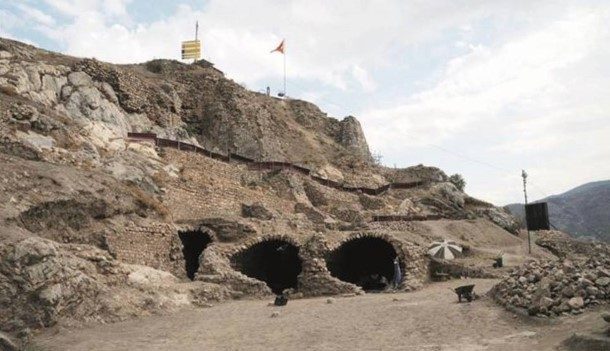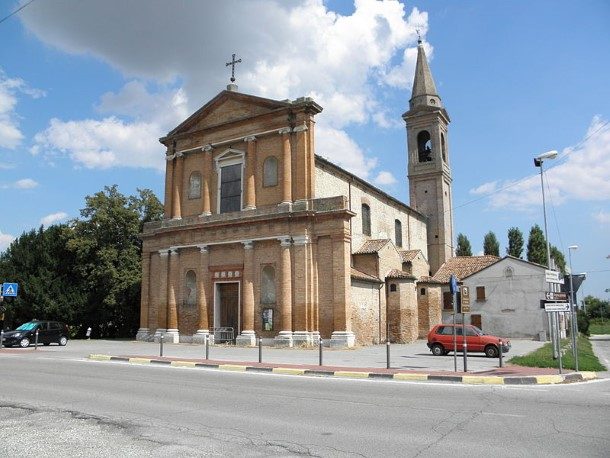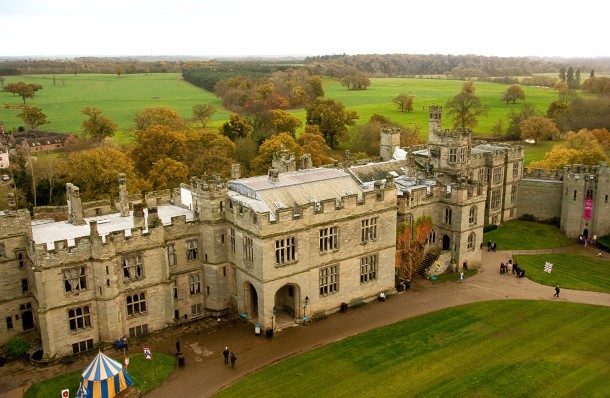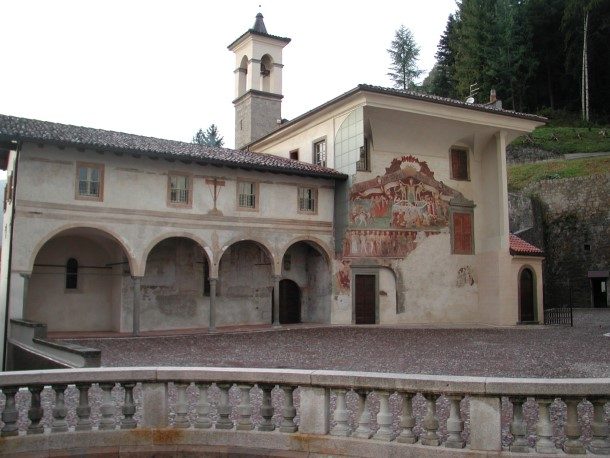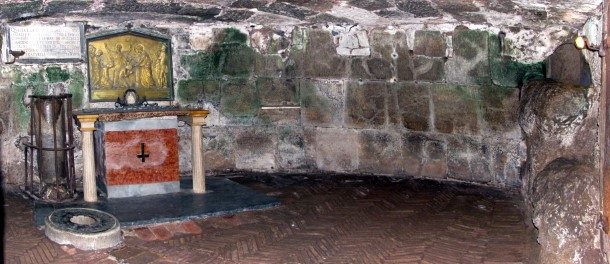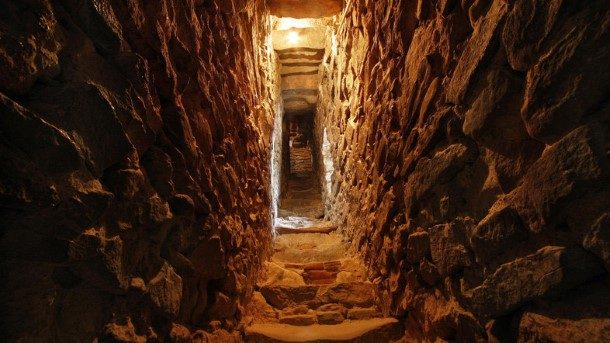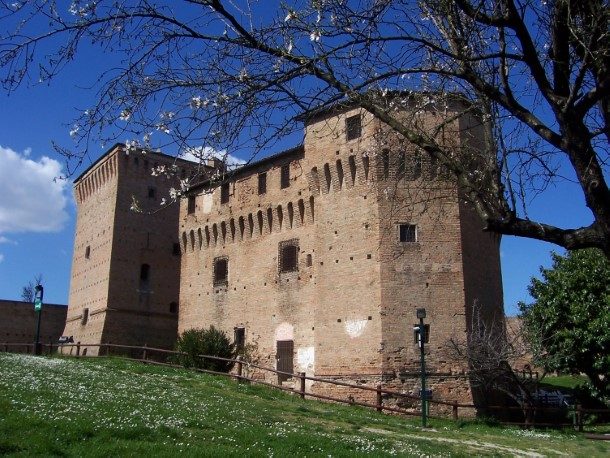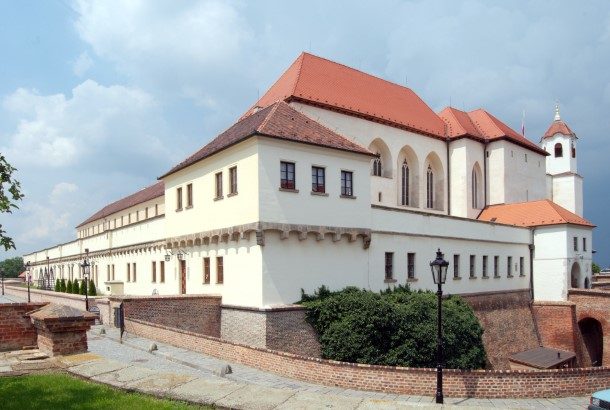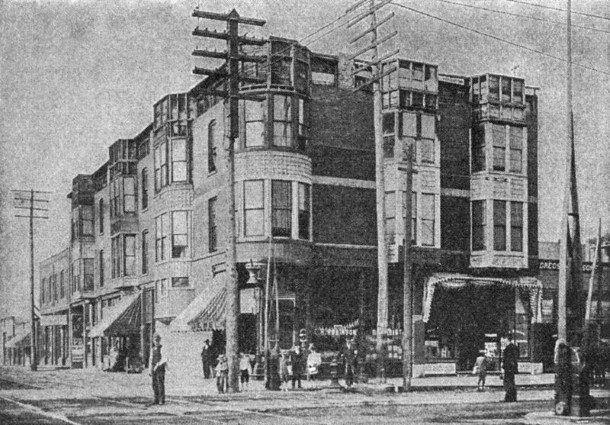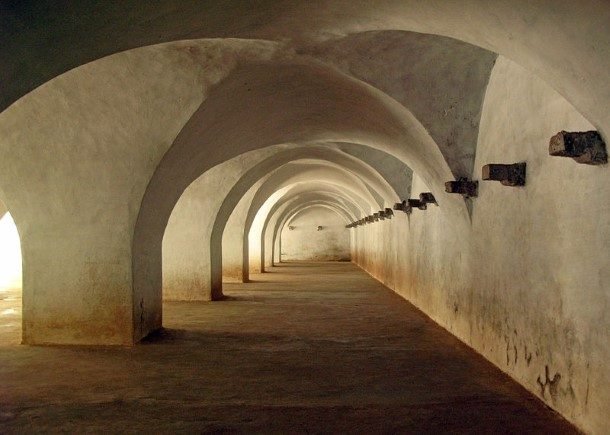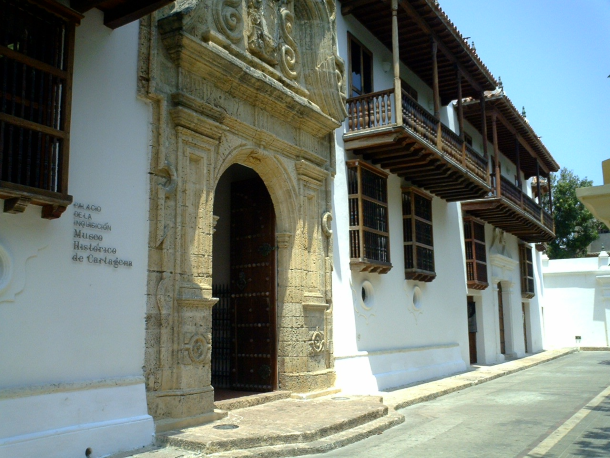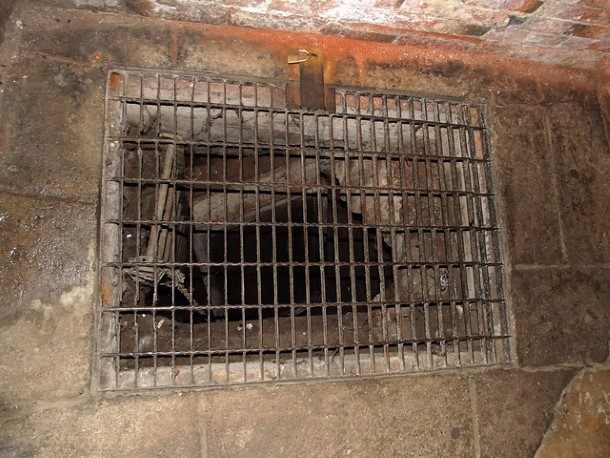For doubters, there’s nothing that will get that point across as easily as our long and brutal record of torture. Although the techniques and motivations might change depending on the location or period of time, torture chambers existed. Uncovered in nearly every human civilization that has walked the earth, people believed in the power of pain. That being said, a couple of historic groups took things even further. They created horrifying prisons that still bear the marks of the atrocities that were committed there. So, without further ado, we present our list of 20 real torture dungeons you’ll (not) want to visit. https://www.youtube.com/watch?v=e7D35AOUrQc It’s believed that it was in one of these tunnels where Vlad the Impaler was held. He was the man who would become the inspiration for the vampire Count Dracula in Bram Stoker’s novel (with the same name). He was imprisoned and tortured at some point during the early 15th century. The castle is currently undergoing restoration and will soon be open to the public. Once upon a time the church was home to a pozzo delle lame, a well of blades where prisoners would be thrown down to suffer a slow and painful death. To this day, Warwick Castle is considered one of the most haunted places you can visit. Its reputation is capitalized by the touristy “Castle Dungeon” museum. The ghastly room is located in the original dungeons. Interestingly, reenactments with live actors take place there on a daily bases, showcasing the creepy activities that took place inside those walls. These Disciplinati would seek ways to absolve themselves of sin through torture and self punishment, believing that by experiencing the pain of Christ first hand they would have a better understanding of god. Among its list of prisoners are a number of notable figures such as Vercingetorix the leader of the Gauls and the Jewish revolutionary Simon Bar Jioras, as well as the Apostles Saint Peter and Saint Paul, who were held there preceding their crucifixions. One of the most well known of prisoners held within the Tower of London, none other than Guy Fawkes, the man behind the failed gunpowder plot assassination, was tortured so badly he lost the use of his hands following his imprisonment. Incredible, and disturbing artifacts, recently unearthed in 2017, have told us a lot about the violent history and methods of torture in the region. They are located in the northwestern Bursa Province in Turkey and are currently part of a UNESCO World Heritage location. That wasn’t always the case. During the medieval era, this location was one that, while just as holy, was anything but peaceful. After its completion in 1180, the abbey was the location of public executions. Lawbreakers were beheaded with an ax in front of crowds sometimes numbering in the hundreds. Due to the secretive nature of the CIA, the exact number and conditions inside the prisons are unknown. However, they are believed to exist on every continent. Those who have seen the inside describe them as some of the saddest and most hellish locations imaginable. You might also be surprised to learn that this castle is, in fact, one of the most haunted places in Italy. Deep in its basements exists an underground room that was once the location of some of the worst torture atrocities ever. This room was called the Sala delle Torture, the “hall of tortures.” It is said that visitors can still hear the screams of the tortured souls stuck inside. In this exhibit, visitors can see the various mechanisms and tools that would have been put to use in the dungeons of the castle; including stretching racks, body cages, and spiked collars. These devices added to the infamous thumbscrews process were used to slowly crush a prisoner’s fingers over the course of hours. It’s most gruesome history was the period of time during World War 2, during which it was under the control of Nazi forces who used the castle to hold and torture their enemies. This 20-meter wide subterranean cavern would not only have once been a place to store spices and grains, as the name suggests but also a place to keep imprisoned enemies of the state while they were awaiting trial or execution. The only entrance and exit was a hole in the roof of the dungeon, which would have only been accessible via a ladder or rope. The hotel consisted of a number of dead-end halls, secret passages, and over 100 rooms filled with deadly traps and chutes that led directly to the basement and were definitely not for laundry. Holmes would eventually be caught before the hotel could open, but not before he kidnapped, tortured, and executed countless people within the building. It would later burn to the ground 1895, but a United States post office built in the foundation of the horrific hotel has since become somewhat of a landmark for any tourists seeking a macabre thrill. However, deep in its halls lie unimaginable horrors. This castle contains a network of prison cells and torture rooms that are known for being some of the most brutal in England’s history. Most of the inmates held there during the 13th and 14th centuries were Scottish soldiers, working under the command of the revolutionary William Wallace. Unsurprisingly, records show that many women and children were kept and tortured for information and ransom during the period as well. It was filled with cold, waist-deep water that would force prisoners to stay on their feet or else they would drown. The water forced them to be deprived of sleep for days. It was named after Colonel Bailey, a British commander who perished within the dungeon alongside many of his soldiers in the late 18th century. That’s not to take away from this castle’s dark history of torture, however. Prisoners of Pontefract Castle were kept in dark, damp cells and tortured daily. Many of them even carved their names into the walls which can still be seen today by visitors taking a tour of the ruined castle’s surviving cellars. The castle was also the setting and inspiration for the Shakespeare’s “Richard III,” after the real King Richard who was likely executed in the castle’s dungeons in the early 15th century. Although breathtakingly beautiful from the outside, inside the walls of this palace was one of the most terrifying and torturous prisons in history. Of the more than 800 people who were tried for heresy at the palace, all were found guilty after days of nonstop torture forced them to confess. Unfortunately for many British soldiers in Bukhara, Uzbekistan this was exzactly how they would end up going. Left in what came to be named the “Bug Pits,” prisoners were left bound for sometimes years on end while bugs, scorpions, and even rats were dumped on their heads from small holes over their heads. It tempted people to enter, however, those that succumbed and walked through the doors would be punished through some of the most horrific tortures imaginable. The tortures, some of these insane torturing methods included boiling prisoners alive and the covering of their bodies in molten metal. The gruesome methods apparently came from what the prison’s creator, the Indian emperor Ashoka, saw while visiting hell!
